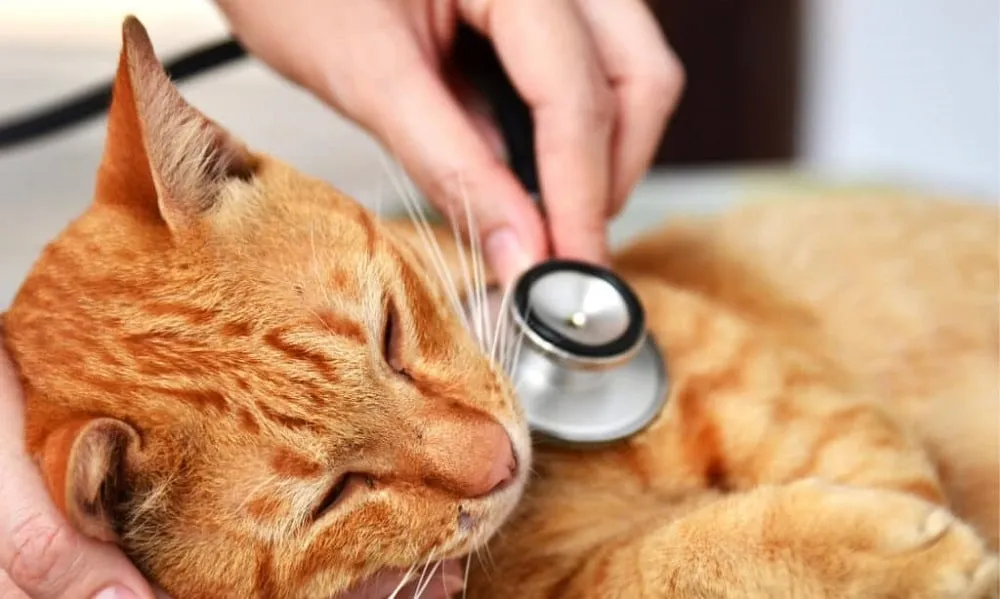Table of Contents
ToggleWill pet insurance cover pre existing conditions?
Pet insurance is an essential investment for pet owners to ensure that their furry companions receive the necessary medical attention without causing a significant financial burden. However, some pet owners may find that their pet has pre-existing conditions, which can be concerning when considering pet insurance coverage. In the UK, pet insurance coverage for pre-existing conditions is not straightforward, and there are several factors to consider before deciding. In this article, we will explore whether pet insurance covers pre-existing conditions in the UK and what pet owners should consider when selecting a policy.
What are pre-existing conditions in pet insurance?
In pet insurance, pre-existing conditions refer to any illness, injury, or medical condition that your pet had before you enrolled them in a pet insurance policy. Suppose your pet had a condition or received treatment for an injury before the policy’s effective date. In that case, the insurer may consider it a pre-existing condition and not cover it under the policy.
Pre-existing conditions can range from chronic conditions such as diabetes, heart disease, or cancer to minor illnesses like allergies or skin conditions. Even if the condition is no longer active or has been cured, it may still be considered pre-existing by the insurer.
The definition of pre-existing conditions can vary depending on the insurer, and it is essential to review the policy’s terms and conditions carefully to understand what is covered and what is not. Some insurers may exclude pre-existing conditions altogether, while others may cover them after a waiting period or for an additional premium.
It is also worth noting that pre-existing conditions can affect coverage for related conditions. For example, if your pet has a pre-existing condition such as hip dysplasia, the insurer may exclude coverage for any condition related to hip issues.
Understanding pre-existing conditions is essential when considering pet insurance, as it can affect coverage and premiums. Reviewing your pet’s medical history and discussing any pre-existing conditions with the insurer before enrolling in a policy is always recommended.
Will pet insurance cover pre-existing conditions?
Pet insurance may or may not cover pre-existing conditions, depending on the policy and the specific conditions. A pre-existing condition is a health problem that existed before the pet insurance policy was purchased, and it may include chronic conditions such as diabetes, cancer, or allergies.
In general, pet insurance policies will exclude coverage for pre-existing conditions. This means that if a pet has a pre-existing condition, the insurance company will not pay for any related treatment, regardless of when the policy was purchased. However, some pet insurance companies may offer coverage for pre-existing conditions if certain conditions are met.
For example, some pet insurance companies may cover pre-existing conditions if the pet has been symptom-free for a certain period (such as 6-12 months) or if the pet has undergone a waiting period (usually 6-12 months) during which the condition was not treated. Additionally, some policies may cover pre-existing conditions if considered curable or minor conditions that do not require ongoing treatment.
It is essential to carefully review the terms and conditions of a pet insurance policy before purchasing it to understand what pre-existing conditions are covered or excluded. Some policies may have specific exclusions for certain conditions, so reading the fine print carefully is important.
If a pet has a pre-existing condition not covered by pet insurance, options are still available. Pet owners may consider setting up a savings account specifically for their pet’s medical expenses or researching alternative forms of financing, such as medical credit cards or crowdfunding platforms.
In summary, whether or not pet insurance will cover pre-existing conditions depends on the specific policy and the pet’s individual health history. Pet owners must carefully review policy terms and conditions before purchasing insurance and consider alternative financing options if necessary.
Why do pet insurance companies exclude coverage for pre-existing conditions?
Pet insurance companies typically exclude coverage for pre-existing conditions because they are considered high-risk and costly. A pre-existing condition is any injury or illness that your pet has before you purchase a pet insurance policy. If your pet has a pre-existing condition, it is already deemed to have a higher likelihood of needing medical treatment in the future. As a result, pet insurance companies may exclude coverage for pre-existing conditions entirely or provide limited coverage with higher premiums and deductibles.
From a business standpoint, pet insurance companies exist to make a profit. Paying out for expensive medical treatments for pets with pre-existing conditions could jeopardize their ability to stay profitable. By excluding coverage for pre-existing conditions, pet insurance companies can limit their financial risk and offer more affordable policies to pet owners.
Pet insurance companies may also exclude coverage for pre-existing conditions to deter pet owners from waiting until their pet gets sick or injured to purchase a policy. If pet owners could wait until their pet has a pre-existing condition to purchase a policy, insurance companies would face more claims and, in turn, higher costs.
It’s essential to read the fine print of any pet insurance policy and understand the specific exclusions and limitations, especially regarding pre-existing conditions. While some pet insurance companies may exclude pre-existing conditions entirely, others may provide limited coverage or require a waiting period before coverage begins.
Alternatives to traditional pet insurance for pets with pre-existing conditions-:
For pet owners with pets who have pre-existing conditions, there may be better options than traditional pet insurance. Fortunately, there are alternative options available that can provide coverage and financial assistance for veterinary care.
- Pet Savings Accounts: Pet savings accounts are similar to human health savings account. Pet owners can deposit money into an account that is specifically designated for their pet’s medical expenses. These funds can then be used to cover costs related to pre-existing conditions and any other veterinary expenses.
- Pet Wellness Plans: Pet wellness plans are another alternative to traditional pet insurance. These plans typically cover routine wellness care, such as vaccinations and annual check-ups, but may also cover some pre-existing conditions. Pet owners pay a monthly fee for these plans, which can be more affordable than traditional pet insurance.
3: Discounted Programs: Some pet insurance companies offer discounted programs for pets with pre-existing conditions. These programs may cover some treatments and medications related to the pre-existing condition but may have limitations or exclusions. It’s essential to read the details carefully to ensure the program will provide adequate coverage.
4: Non-Profit Organizations: Several non-profit organizations provide financial assistance for pets with pre-existing conditions. These organizations may offer grants, low-cost loans, or other financial assistance to help pet owners cover the cost of veterinary care.
5: Care Credit: CareCredit is a credit card specifically designed for healthcare expenses, including veterinary care. Pet owners can use CareCredit to pay for veterinary bills related to pre-existing conditions. The card offers various payment plans with low-interest rates and can be a helpful tool for managing veterinary expenses.
Pet owners have options for providing financial assistance for their pets’ pre-existing conditions, including pet savings accounts, pet wellness plans, discounted programs, non-profit organizations, and CareCredit. It’s essential to research these alternatives and choose the best option that fits the needs of the pet and its owner.
Tips for managing pets with pre-existing conditions-:
Having a pet with a pre-existing condition can be stressful, especially when managing their health and finding the right insurance coverage. However, pets with pre-existing conditions can still lead happy and healthy lives with proper care and attention.
Tips for managing pets with pre-existing conditions:
- Regular veterinary check-ups: One of the best ways to manage a pet with a pre-existing condition is to ensure regular veterinary check-ups. This will allow you to monitor their health, catch any changes early, and adjust their treatment plan if necessary.
- Follow the treatment plan: If your pet has a pre-existing condition, it is essential to follow their treatment plan as the veterinarian prescribes. This will help to manage their condition and prevent any further complications.
- Maintain a healthy lifestyle: A healthy lifestyle is essential for pets with pre-existing conditions. This includes a balanced diet, regular exercise, and maintaining a healthy weight. You should also provide your pet with plenty of mental stimulation and socialization.
- Keep track of symptoms: It is essential to keep track of any symptoms or changes in behavior that your pet exhibits. This can help you identify any potential issues and allow you to seek veterinary care as needed.
- Consider alternative therapies: Depending on your pet’s condition, alternative therapies such as acupuncture or hydrotherapy may be beneficial. Always consult with your veterinarian before starting any alternative therapies.
Managing a pet with a pre-existing condition requires extra care and attention, but with proper management and care, pets with pre-existing conditions can live happy and healthy lives. Following these tips and working closely with your veterinarian can ensure your pet receives the best possible care and support.
Conclusion-
Pet insurance in the UK generally does not cover pre-existing conditions. While it may be frustrating for pet owners with pre-existing conditions, options are still available, such as seeking out specialized pet insurance plans or considering alternative forms of financial assistance. Pet owners must carefully read and understand the terms and conditions of their pet insurance policies and discuss any concerns or questions with their insurer to ensure they have a clear understanding of their coverage.
















